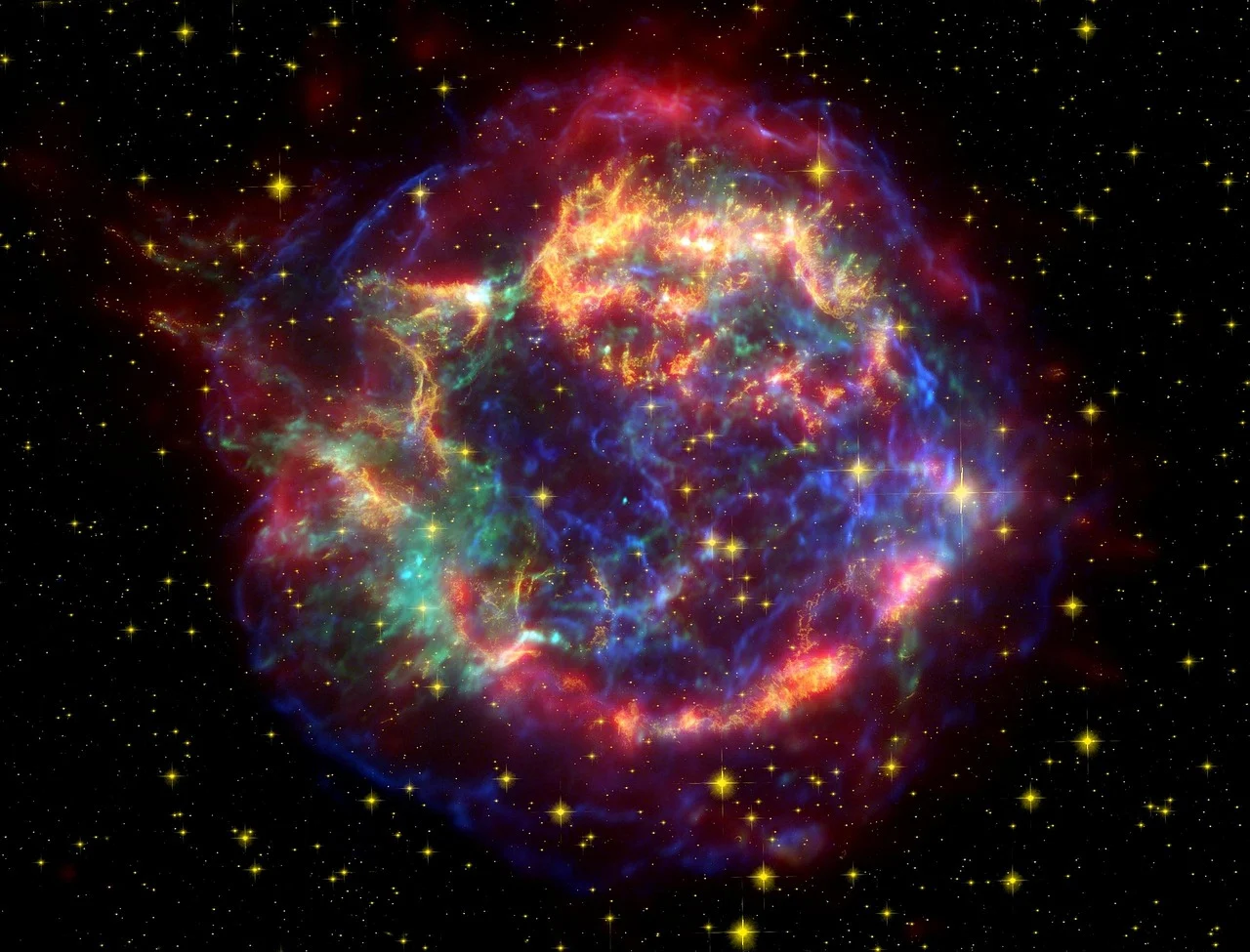A pair of supermassive black holes can be seen dancing when bright photons are spotted by NASA telescopes.
The nearest pair of supermassive black holes to be seen to date has been detected by two telescopes. The Hubble Space Telescope and NASA's Chandra X-ray Observatory were used to capture images of the pair, who are only roughly 300 light-years distant, at various light wavelengths.
These two glow brightly because they are accelerating and heating the gas and particles they feed on to extremely high temperatures, while black holes are invisible against the pitch-black emptiness of space.
Active galactic nuclei are the names given to these two circling astronomical phenomena. Supermassive black holes, or active galactic nuclei, emit intense winds and brilliant material jets that have the power to sculpt the very galaxies in which they are found.
The nearest pair discovered using X-ray and sunlight is the black hole pair. Although there have been previous observations of black hole pairings, they are typically significantly farther away. 800 million light-years away, in the center of a pair of colliding galaxies known as MCG-03-34-64, astronomers spotted these black holes whirling around each other.
When Hubble's views showed three spikes of intense light amid a galaxy's blazing gas, astronomers by chance discovered the black holes. Their discovery was reported in The Astrophysical Journal on Monday.
Lead researcher Anna Trindade Falcão, a postdoctoral scholar at the Institute for Astrophysics | Harvard & Smithsonian in Cambridge, Massachusetts, explained in an announcement, "We hadn't anticipated to witness something like this." "This view indicated that there is activity within the galaxy, as it is uncommon in the nearby universe.
Focusing focused on brilliant celestial lights
When Hubble detected three optical diffraction spikes in a confined area of the MCG-03-34-64 galaxy, the team was fascinated. When sunlight from a tiny cosmic region bends across the mirror within telescopes, diffraction spikes form.
Although optical light, which is visible to the naked eye, was used for Hubble's studies, the astronomers were unsure of what they were witnessing. Falcão's group used Chandra to examine the galactic region once more in X-ray photons.
Using Chandra, the scientists observed the galaxy and identified two strong X-ray light sources that correlated with the visible light sources recorded by Hubble, according to Falcão. After assembling all the information, we came to the conclusion that two closely separated supermassive black holes were probably what we were seeing.
The group also reviewed radio wave data from archival monitoring that was gathered by radio telescopes in the Karl G. Jansky Very Large Array in the vicinity of Socorro, New Mexico. It was also discovered that the pair of black holes emitted powerful radio waves.
After ruling out a number of possibilities, it is determined that intense light observed at optical, X-ray, and radio wavelengths can only be explained by nearby black holes. The picture of the (active galactic nuclei) pair is what you get when you put all the parts jointly, according to Falcão.
Meanwhile, the team needs more information to determine the possible cause of the third diffraction spike that Hubble saw. The gas that was jolted by an intense material discharge from one of the black holes could be the source of the light.
"Without Hubble's incredible resolution, we wouldn't be able to see all of these subtleties," Falcão remarked.
Through radio telescopes, astronomers have seen couples of black holes that are more distant than these two, but such pairs haven't been seen in other light wavelength.
Once the centers of their respective galaxies, both supermassive black holes are now significantly closer to one another thanks to a galactic merger.
Based on NASA, the proximity of the spiral will ultimately result to a combination in roughly 100 million years, resulting in the explosive discharge of gravitational waves, or ripples in space and time.
Future detection of these gravity waves resulting from supermassive black hole collisions may be possible with the Laser Interferometer Space Antenna (LISA) mission, which is led by the European Space Agency and is scheduled to launch in the mid-2030s.



.gif)